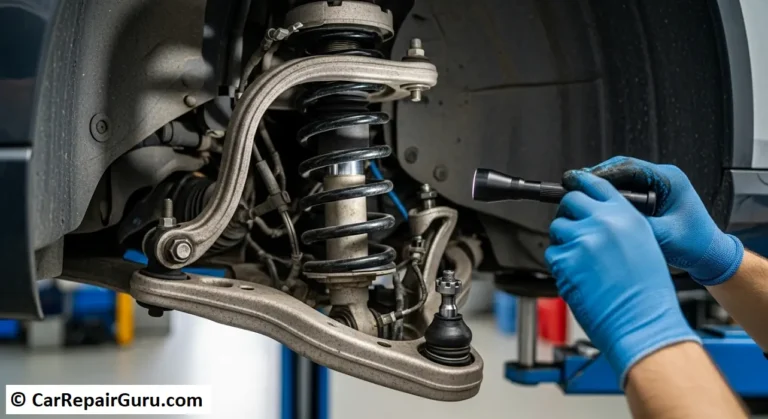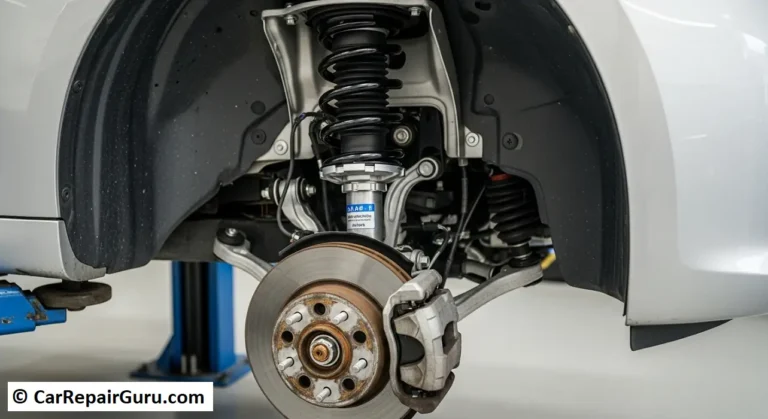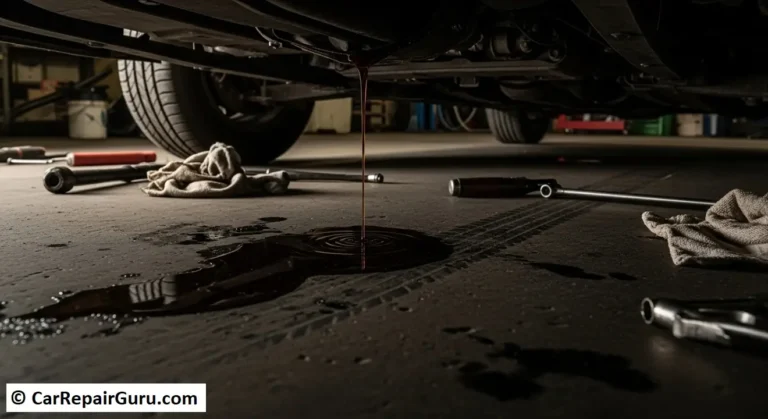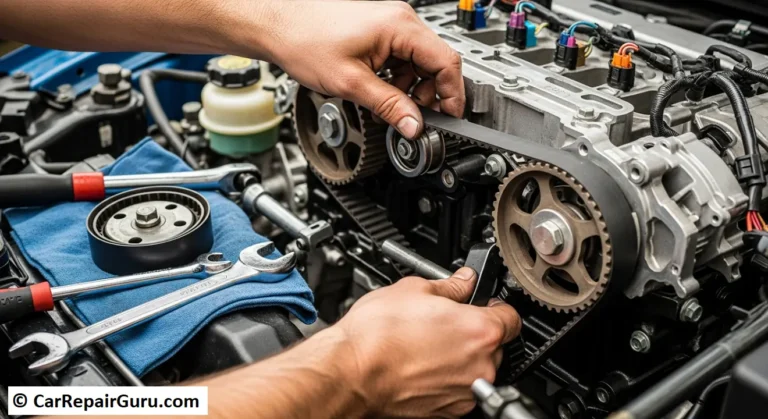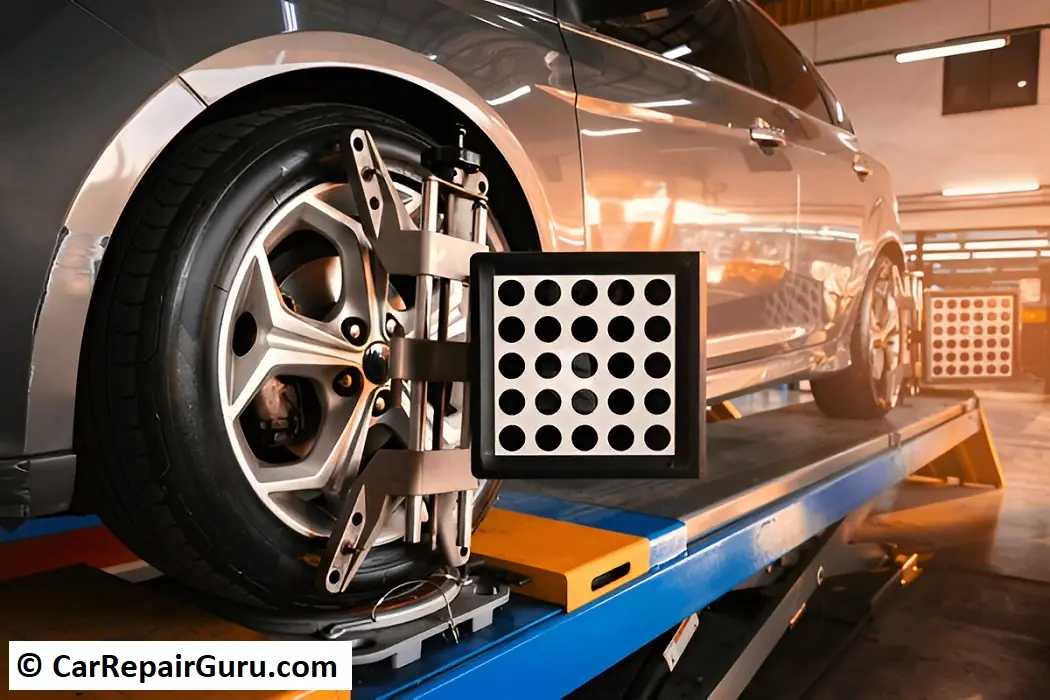
Have you ever noticed your car drifting to one side or your steering wheel feeling off-center? That could be a sign your wheel alignment is out of sync. Simply put, wheel alignment refers to adjusting the angles of your car’s wheels so they’re perfectly aligned with each other and the road. It might sound like a minor detail, but it plays a major role in how your car drives.
Proper car alignment ensures your tires wear evenly, your steering stays accurate, and your fuel economy doesn’t take a hit. When your tire alignment is off, it can lead to poor handling, reduced safety, and even damage to your suspension over time.
In this guide, we’ll walk you through everything you need to know about wheel alignment—from spotting the signs of misalignment to understanding how often you should get it checked. Let’s dive in.
What Is Wheel Alignment?
Wheel alignment is all about adjusting your car’s suspension—not the wheels themselves—to ensure the tires sit at the correct alignment angles for optimal contact with the road. These angles affect how your car handles, how your tires wear, and even how smooth your ride feels.
Let’s break down the three main alignment angles:
- Camber: The tilt of the tire inward or outward when viewed from the front of the car. Too much tilt either way can cause uneven wear.
- Toe: The direction the tires point in relation to each other—like if your toes point inward or outward when standing. Incorrect toe can make your car feel unstable.
- Caster: The angle of the steering axis when viewed from the side. It helps with steering stability and returnability.
There are two common types of alignment:
- Front end alignment (also called 2-wheel alignment): Adjusts only the front wheels. Ideal for vehicles with solid rear axles.
- 4-wheel alignment: Adjusts all four wheels, typically done on vehicles with independent rear suspensions.
Today’s alignment is done using computerized systems, which provide precise digital measurements and real-time feedback. This ensures that every wheel is perfectly aligned according to your vehicle’s manufacturer specifications—maximizing safety, tire life, and overall performance.
Signs Your Car Needs a Wheel Alignment
Noticing something off with how your car drives? It might be time to check for signs of bad alignment. Ignoring these clues can lead to costly repairs and a much less comfortable (or safe) ride. Here are the most common red flags:
Uneven tire wear: Take a look at your tires. If one side is more worn than the other, it’s a strong indicator your wheels aren’t properly aligned. Uneven tire wear can shorten your tire’s lifespan dramatically.
Steering wheel off-center: If your steering wheel doesn’t sit straight when you’re driving in a straight line, it’s one of the clearest steering issues caused by poor alignment.
Car pulling to one side: Feel like your car wants to veer left or right on its own? That’s a classic alignment problem and can be dangerous at higher speeds.
Vibration in steering wheel: If your steering wheel vibrates, especially at certain speeds, misaligned tires could be fighting each other.
Poor fuel efficiency: Misalignment causes your car to work harder than it should, which can lower your miles per gallon over time.
Catching these symptoms early can save your tires, your wallet, and potentially even your safety.
Causes of Wheel Misalignment
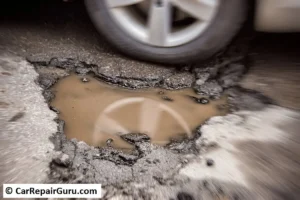
Wondering how your wheels ended up out of line in the first place? There are several everyday situations that can throw your alignment off balance. Let’s take a look at the most common wheel misalignment causes:
- Potholes and rough roads: One good hit in a deep pothole can be all it takes. Rough or uneven road surfaces put extra stress on your suspension system, knocking things out of alignment.
- Hitting a curb: It happens to the best of us—clipping a curb while turning or parking. Even a light bump can affect your alignment, especially if it hits your front wheels directly.
- Suspension wear: Over time, components in your suspension—like bushings, ball joints, and shocks—wear out. Worn parts cause suspension issues that can gradually pull your wheels out of alignment without you even realizing it.
- Accidents or collisions: Any type of crash, even a minor fender-bender, can shift your vehicle’s alignment. It’s always a good idea to have it checked after an impact.
Knowing what causes misalignment helps you prevent it—or at least catch it early before it leads to bigger problems. Drive mindfully, and if you experience any of these events, get your alignment checked sooner rather than later.
Wheel Alignment Cost: What to Expect
So, how much should you expect to pay for a wheel alignment? The truth is, the wheel alignment cost can vary depending on a few key factors. On average, you’ll pay:
- $50 to $100 for a 2-wheel alignment (also called front-end alignment)
- $100 to $200 for a 4-wheel alignment, which includes adjustments on both the front and rear wheels
The type of shop you choose matters, too. A dealership might charge more due to brand-specific expertise and equipment, while an independent shop may offer more competitive rates—sometimes with special deals or discounts.
Other things that can impact your alignment service cost include:
- Vehicle type (luxury or performance cars often cost more)
- Location (urban areas tend to be pricier)
- If additional suspension repairs are needed
- Whether you’re combining the service with something else, like new tires
Bottom line? While the cost might feel like an extra expense, proper alignment saves you money in the long run by extending tire life, improving fuel economy, and preventing bigger issues down the road.
How Often Should You Get a Wheel Alignment?
You might be wondering, “How often do I really need a wheel alignment?” Great question—because staying on top of it can save you a lot of trouble (and money) down the road.
The general alignment frequency recommended by most experts is every 6,000 to 10,000 miles—or roughly once a year, depending on how and where you drive. But this isn’t a hard rule. If you frequently hit potholes, drive on rough roads, or carry heavy loads, you might need a regular alignment check more often.
It’s also smart to get an alignment:
- After replacing suspension components
- When installing new tires
- If your vehicle has been in a minor collision
- Any time you notice signs of misalignment (pulling, uneven tire wear, etc.)
Always check your manufacturer’s guidelines for the most accurate recommendation based on your specific make and model. A quick alignment check can go a long way in keeping your car safe, smooth, and efficient.
Benefits of Proper Wheel Alignment
Getting a wheel alignment might seem like just another item on your car maintenance checklist—but it actually makes a big difference in how your vehicle performs and how much money you save over time. Here’s why it matters:
- Improved tire life: Misaligned wheels cause uneven tire wear, meaning you’ll be replacing those pricey tires much sooner than necessary. Proper alignment helps distribute weight evenly across the tire surface, extending their lifespan.
- Better fuel efficiency: When your wheels are properly aligned, your tires roll with less resistance. That means your engine doesn’t have to work as hard—saving you gas and improving overall fuel efficiency.
- Smoother driving experience: No more fighting the steering wheel or feeling like your car wants to drift. A good alignment brings back that smooth, easy driving comfort you might not have realized you were missing.
- Enhanced safety and handling: Aligned wheels help your car respond better to steering input, especially in emergency situations or at higher speeds. That adds a layer of safety you shouldn’t overlook.
In short, regular wheel alignment isn’t just about mechanics—it’s about driving smarter, safer, and more affordably.
DIY vs Professional Alignment
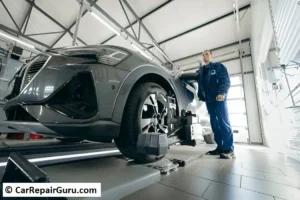
Thinking about trying a DIY alignment at home? While it’s tempting to save money and do it yourself, there’s a lot to consider before grabbing your wheel alignment tools.
Yes, in theory, DIY wheel alignment is possible—especially if you have basic mechanical skills and the right equipment. Some car owners use string methods or inexpensive alignment kits to make minor adjustments. However, alignment isn’t just about eyeballing the tires. It involves precise measurements of camber, toe, and caster angles—something that’s hard to get right without professional-grade tools.
Here are the risks of DIY alignment:
- Inaccurate adjustments that make things worse
- Uneven tire wear and handling issues
- Potential damage to suspension components
- Safety risks if your car doesn’t steer or respond correctly
That’s why most experts recommend trusting a certified alignment shop, especially if you’re noticing serious symptoms or have a modern vehicle with advanced suspension systems. Professional alignment uses computerized systems to ensure exact specs—something that’s almost impossible to replicate at home.
Bottom line? Unless you’re experienced and fully equipped, leave it to the pros for peace of mind and precision.
Finding the Best Wheel Alignment Service Near You
Searching for wheel alignment near me? With so many options out there, finding a trustworthy and skilled alignment shop can feel overwhelming—but it doesn’t have to be.
Here’s what to look for in a quality wheel alignment service:
- Computerized alignment systems: Modern vehicles require high-precision adjustments. A good shop will use advanced, computerized equipment to measure your alignment angles down to the decimal—far more accurate than old-school methods.
- Certified technicians: Look for ASE-certified or manufacturer-trained mechanics who understand the specific needs of your vehicle’s suspension and steering systems.
- Clear pricing and service breakdowns: A reputable shop will explain what’s being done, offer a detailed report, and provide upfront costs for 2-wheel or 4-wheel alignment.
- Customer reviews and recommendations: Don’t underestimate the power of word-of-mouth. Check Google reviews, ask friends or family, or browse local forums to see which shops consistently deliver reliable, honest service.
In short, don’t just go with the closest option—choose a shop that combines expertise, technology, and great customer service. Your car (and your wallet) will thank you.
Conclusion
Keeping your wheels properly aligned is one of the simplest yet most impactful ways to protect your car’s performance, safety, and your wallet. From preventing uneven tire wear to improving fuel efficiency and ensuring smooth steering, the benefits of regular wheel alignment are undeniable.
Don’t wait for serious problems to show up—make it a habit to schedule a regular alignment check based on your driving habits and manufacturer’s recommendations. Catching misalignment early saves you money and keeps your ride comfortable and safe.
FAQs
Q1: How long does a wheel alignment take?
A typical wheel alignment usually takes about 30 to 60 minutes, depending on the type of vehicle and whether it’s a 2-wheel or 4-wheel alignment.
Q2: Can bad alignment damage my car?
Yes. Poor alignment can cause uneven tire wear, stress on suspension components, and poor handling, which may lead to costly repairs if left unchecked.
Q3: Is alignment necessary after replacing tires?
Absolutely. New tires perform best when properly aligned. Getting an alignment after installing new tires ensures even wear and extends their lifespan.
Q4: Can I drive with bad alignment?
While you technically can, driving with bad alignment is unsafe and will accelerate tire wear and reduce fuel efficiency. It’s best to fix alignment issues promptly.
Q5: What’s the difference between alignment and balancing?
Alignment adjusts the angles of your wheels for proper steering and tire wear, while balancing ensures your tires rotate smoothly without vibrations by evenly distributing weight around the tire. Both are important but address different issues.

